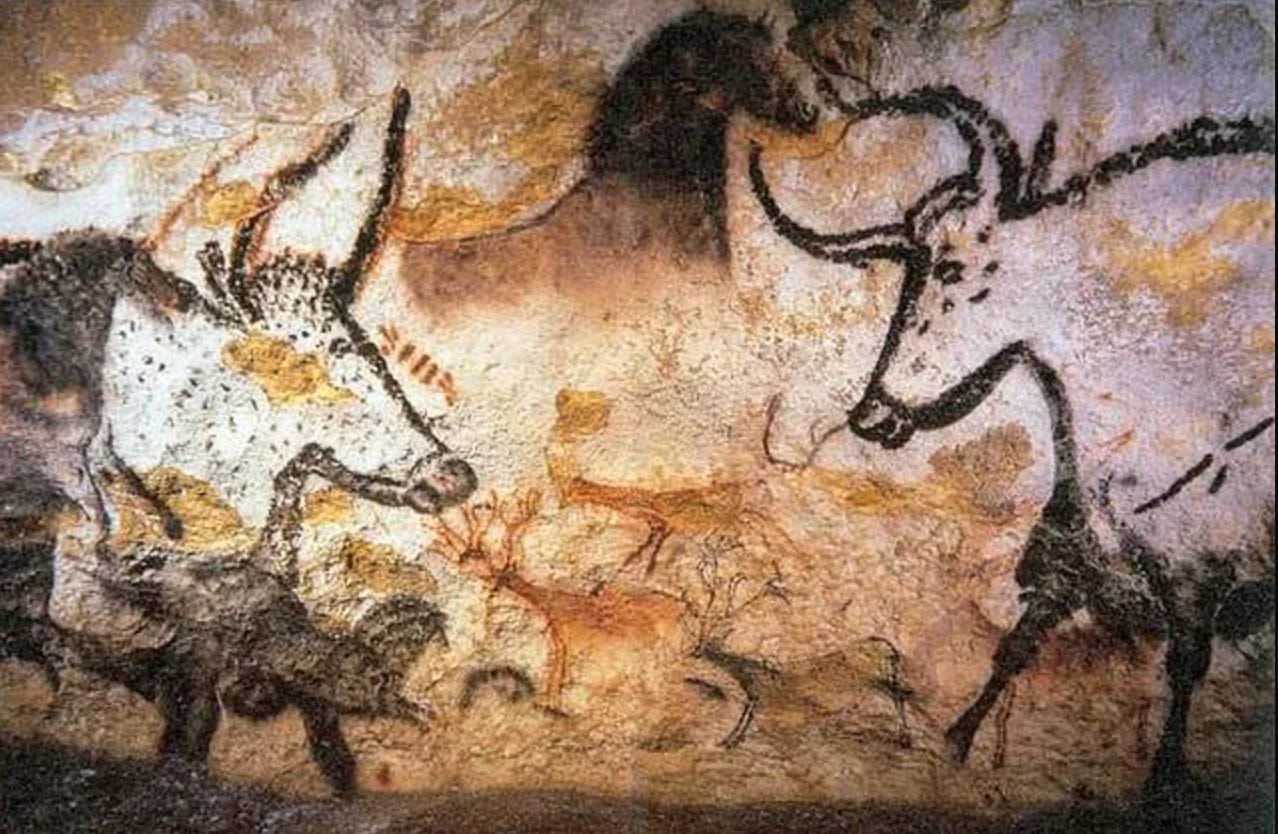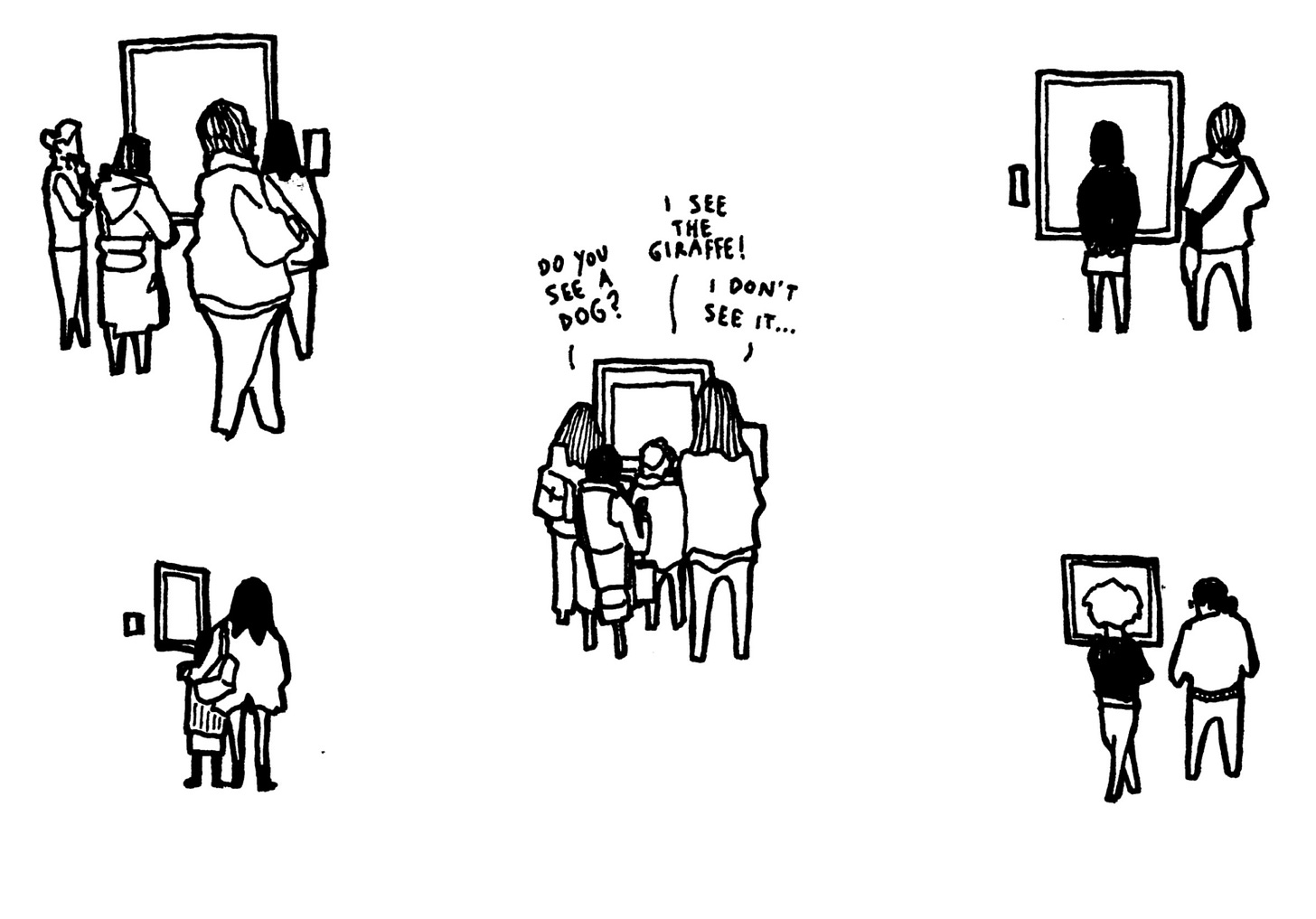What is Art keeps changing
Insider #88 with new questions that are actually old.
Dear Insider,
This month, I am reading Walter Benjamin’s The Work of Art in the Age of Mechanical Reproduction. In the first part of this series, I introduced the existential crisis facing artists and illustrators today as we confront the behemoth of AI-generated art. In the second part, I spoke about the idea of aura, and how technology allows the viewer to develop a personal relationship with art at the expense of aura.
This short document from 1936 has sent my mind in all kinds of interesting directions. If you are an artist or writer or filmmaker with the patience to read 20-odd pages, I suggest you do so. I would love to hear your thoughts.
Speaking for myself, I read ponderously, taking breaks to accommodate frequent flights of fancy. Letting the words simmer on the proverbial backburner of my mind, I have had some interesting thoughts this week. I am at that reflective stage of my reading - which happens with every good thing I read - where every sentence sparks new inter-neuronal connections in my mind. There is a surge of electricity, and the blinding sparks of a welding, and at the new conjunction, once the light dissipates, I find a new idea, cooling.
In today’s Insider post, some cool new ideas from a document nearly 100 years old.
The SneakyArt (Insider) Post is written for patrons of SneakyArt. Every Sunday, I share a behind-the-scenes look at my work, offer a front-row seat to ongoing projects, and solicit your feedback and kind words on this journey of self-education to be an artist and writer.
If you like the work I do, consider extending your support by gifting a subscription to another reader who would enjoy this.
Cult Value vs Display Value
According to Walter Benjamin, art has had two kinds of value throughout history. In the earliest days of humankind, all value was cult value. Over the centuries, cult value has ceded space to display value. And with mechanical reproduction since the late 19th century — and virtual reproduction since the late 20th century — display value has overpowered cult value.
“The elk portrayed by the man of the Stone Age on the walls of his cave was an instrument of magic.”
Imagine yourself 10,000 years ago, seeing the Lascaux Cave paintings. In one way, it is not difficult to imagine at all. Actually, it is fascinating to consider that, for all intents and purposes, your experience of them 10,000 years ago and today would be almost exactly the same. At that prehistoric time, these cave paintings would be already 7000 years old. You would have no way to reckon with how old that is, just as you do not have a way to reckon with it today. It was and is very, very, very old.
The major difference between seeing them 10,000 years ago and today is that today anyone could click a picture to post on the internet. And so to see those paintings you need not even be present. You can google it. Or a writer might just give you the link you need. A generous writer might even add an image to their text so that you do not need to click on anything at all. Just scroll.
Virtual reproduction allows us to see far beyond our physical limits. The art thus gains display value. But in this tradeoff what is lost is the reverence of the place, the incredible value of every second you spend looking at these images that you may never see again, and the uniqueness of those moments added up - when you breathe the cave air, cast a flickering light from your torch, and see the animals dance on the rough walls of this “Sistine Chapel of Prehistory”. Walter Benjamin describes this difference, between 10,000 years ago and today, as the loss of the aura of art.
Aura is not simply in the beauty of the art. In some ways, the beauty is irrelevant. There is a different value to the experience because it can never be recreated anywhere else. Maybe you will never see those paintings again in your life. So, far beyond the aesthetic value of the art itself, this experience has religious or spiritual value. In Walter Benjamin’s words, this is cult value.
With technological reproduction, cult value lost ground to display value. By the 1930s, Walter Benjamin was already asserting that the cult value of art had become incidental. Nearly one hundred years ago, there was a profound shift in how you, the viewer, saw art and what it meant to you.
It makes me think that maybe none of the problems we see in society - the short attention span, the lack of reverence - are really new. Maybe we have different ideas of things, rooted in different points in history. One such idea could be the role of art in society. Maybe each of us is constructed out of different ideas - borrowed, stolen, imbibed, and absorbed - from across centuries of human thought. And so maybe nothing is modern. Nothing is just now.
Anyway, let’s keep going.




